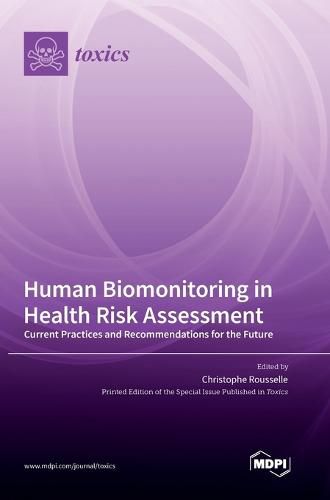Readings Newsletter
Become a Readings Member to make your shopping experience even easier.
Sign in or sign up for free!
You’re not far away from qualifying for FREE standard shipping within Australia
You’ve qualified for FREE standard shipping within Australia
The cart is loading…






This title is printed to order. This book may have been self-published. If so, we cannot guarantee the quality of the content. In the main most books will have gone through the editing process however some may not. We therefore suggest that you be aware of this before ordering this book. If in doubt check either the author or publisher’s details as we are unable to accept any returns unless they are faulty. Please contact us if you have any questions.
Europe's zero-pollution agenda should depart from an understanding of how the European citizens' bodies are polluted by synthetic chemicals and prioritize the reduction of the chemical body burden and associated health impacts. In this context, Human Biomonitoring (HBM) is an important and valuable tool for assessing the internal exposure of humans resulting from aggregated exposure to chemicals. Though many obstacles still hinder the use of HBM data, the growing availability of HBM data offers an opportunity for improving and refining Human Risk Assessment. This Special Issue intends to illustrate, using case studies, how HBM data could be used to better estimate internal exposure and resulting risks. Case studies on exposure from consumer products (cosmetic products, non-food products, etc.) or exposures via food or water in the general population or among workers contributed to better identifying the obstacles hindering a broader use of HBM data in RA. A better understanding of population exposure and the exposure of vulnerable groups against health-based human biomonitoring guidance values also provides the basis for effective risk management to reduce impacts on health. I would like to thank all the authors for submitting their original contributions to this Special Issue. We greatly appreciate the support of all the reviewers who spent time evaluating and improving the quality of the manuscripts. I would also like to thank the editors of Toxics for their kind invitation and Selena Li of the Toxics Editorial Office for her invaluable support.
$9.00 standard shipping within Australia
FREE standard shipping within Australia for orders over $100.00
Express & International shipping calculated at checkout
This title is printed to order. This book may have been self-published. If so, we cannot guarantee the quality of the content. In the main most books will have gone through the editing process however some may not. We therefore suggest that you be aware of this before ordering this book. If in doubt check either the author or publisher’s details as we are unable to accept any returns unless they are faulty. Please contact us if you have any questions.
Europe's zero-pollution agenda should depart from an understanding of how the European citizens' bodies are polluted by synthetic chemicals and prioritize the reduction of the chemical body burden and associated health impacts. In this context, Human Biomonitoring (HBM) is an important and valuable tool for assessing the internal exposure of humans resulting from aggregated exposure to chemicals. Though many obstacles still hinder the use of HBM data, the growing availability of HBM data offers an opportunity for improving and refining Human Risk Assessment. This Special Issue intends to illustrate, using case studies, how HBM data could be used to better estimate internal exposure and resulting risks. Case studies on exposure from consumer products (cosmetic products, non-food products, etc.) or exposures via food or water in the general population or among workers contributed to better identifying the obstacles hindering a broader use of HBM data in RA. A better understanding of population exposure and the exposure of vulnerable groups against health-based human biomonitoring guidance values also provides the basis for effective risk management to reduce impacts on health. I would like to thank all the authors for submitting their original contributions to this Special Issue. We greatly appreciate the support of all the reviewers who spent time evaluating and improving the quality of the manuscripts. I would also like to thank the editors of Toxics for their kind invitation and Selena Li of the Toxics Editorial Office for her invaluable support.